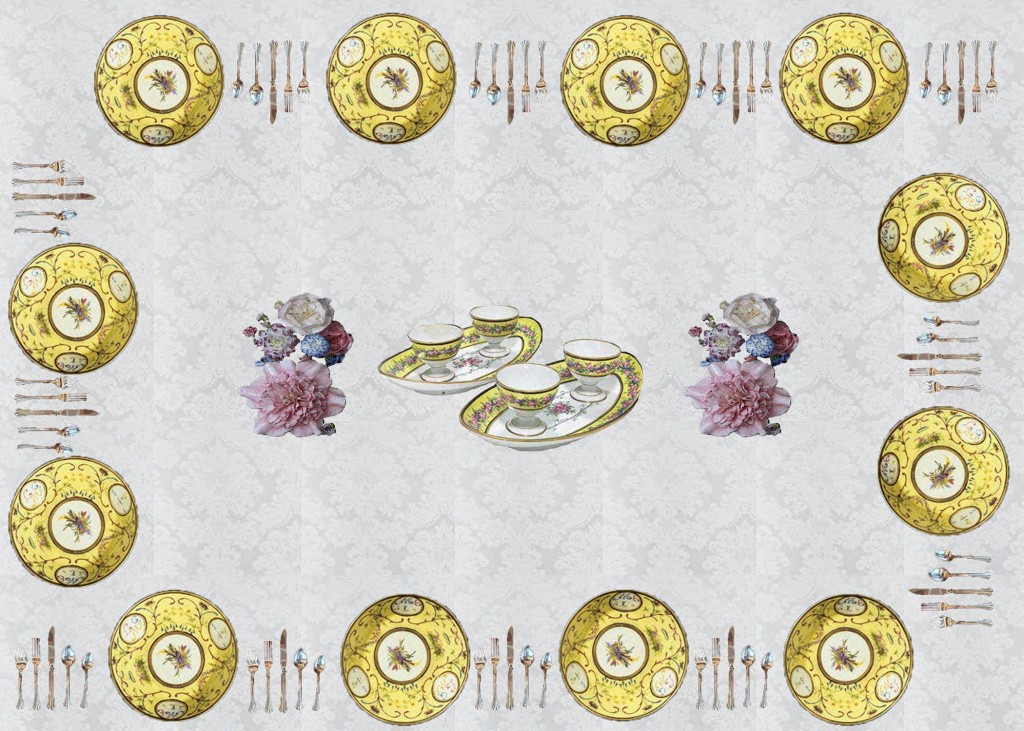joan-ne jon-key
 Porcelain as a Medium for Innovation
Porcelain as a Medium for Innovation
Sèvres yellow, or jaune jonquille, is a hue of yellow that is just a little softer than a canary yellow. Invented by Sèvres’ chemist, Jean Hellot in 1755, however this color for one reason or another seems to have only been used for a few year period. Remaining pieces are somewhat rare as a result. The beauty of the color, regardless of the extent of its use during the apogee of eighteenth-century Sèvres porcelain, is yet an additional testament to the genius of Jean Hellot and the chemists and artisans who aided him in his quest.
It is imperative to understand that not only did the formulation of color creation take individuals within the Sèvres walls a lot of time, but so too did the production of porcelain wares (see vert pomme). As for the ground colors, they are technically glazes. Glaze acts both as an aesthetic quality of porcelain but also serves as a sealant against penetration of liquids. In the case of the Sèvres ground colors, the glaze was mixed with fondant to assist in the fusion of the pigments during firing. In eighteenth-century porcelain speak, fondant was an ingredient that had a lower fusion point when fired such as borax or soda. The ground color pigments were applied over a majority of the ceramic bodies to provide a vibrant background on which motifs could later be added by the artisanal painters at Sèvres.
By 1757, the five Sèvres colors had been invented and perfected, as had the soft-paste porcelain recipe. The manufactory had the backing of King Louis XV. With a state-of-the-art color palette and durable soft-paste porcelain at hand, Sèvres began producing all sorts of porcelain objects and sets of traditional shapes as well as invented new shapes to show off their artisanal magnificence. Aforementioned new shapes include decorative objects, such as the infamous elephant head vases, and new shapes for functional objects, such as potpourri vessels.

This image is meant to act as a visual guide for viewers to see a set of Sèvres plates together in a dining setting that is historically accurate in regards to eighteenth-century customs. This table setting displays twelve bleu celeste plates atop a white damask table cloth in partnership with silver eighteenth-century cutlery, with a centerpiece of two Vincennes porcelain flower arrangements flanking two jaune jonquil Sèvres sauce trays.
[i] Eriksen, Sèvres Porcelain.
[ii] Gérin invented a new kiln type in 1748 which was used throughout the century and is illustrated below (Whitehead, Sèvres at the Time of Louis XV: Birth of the Legend.)
Lowengard, “Colour Quality and Production.”
